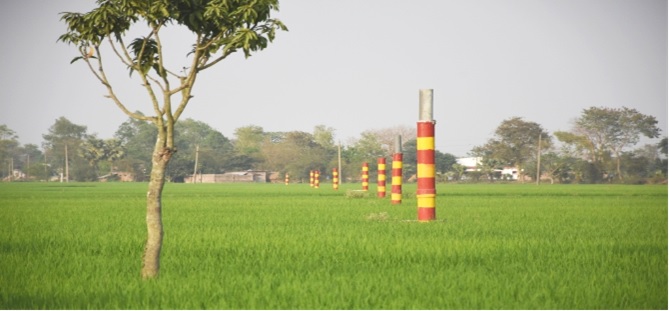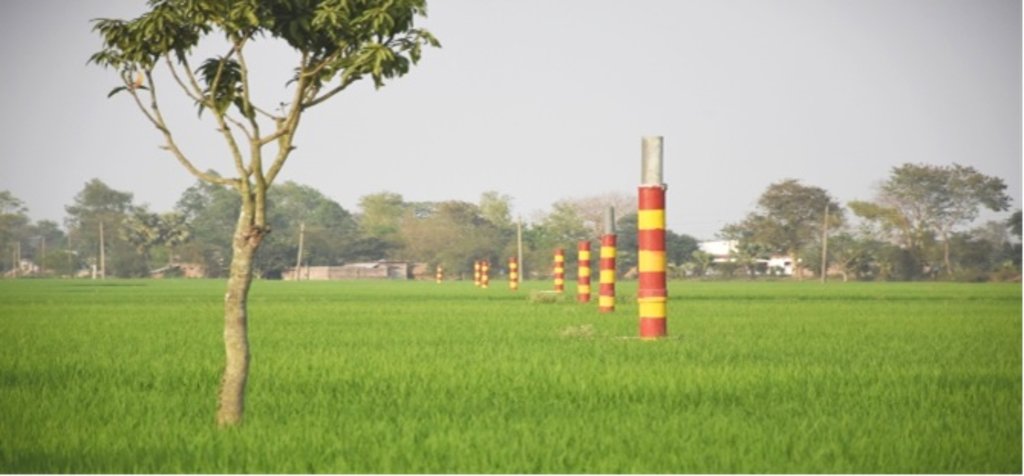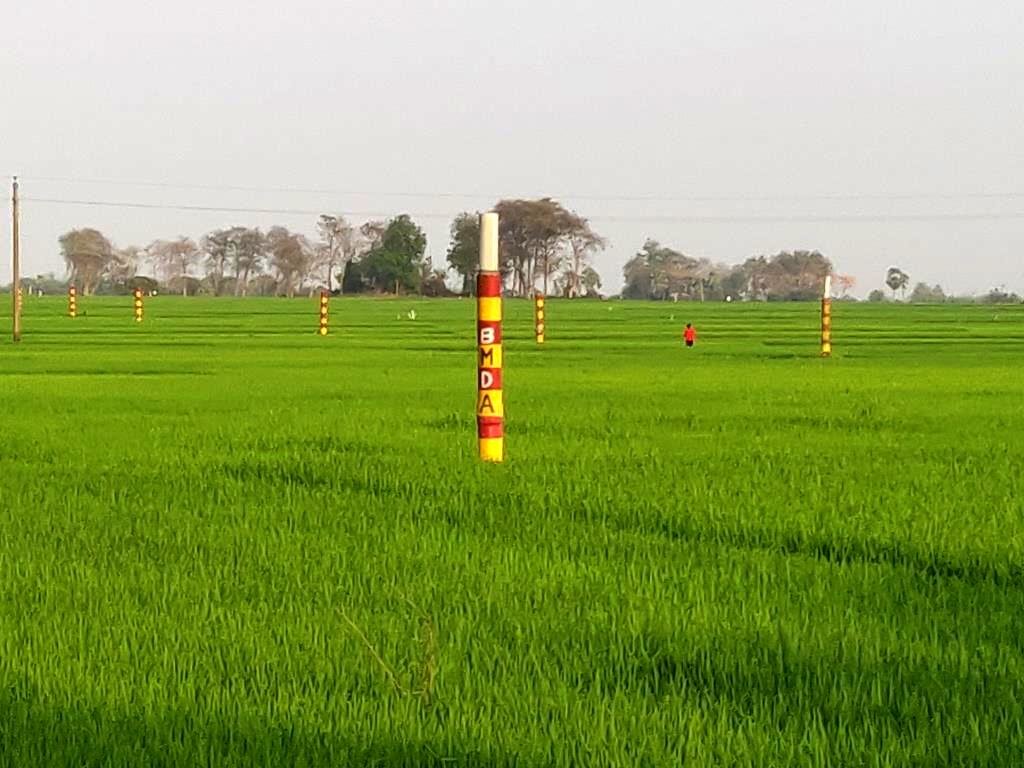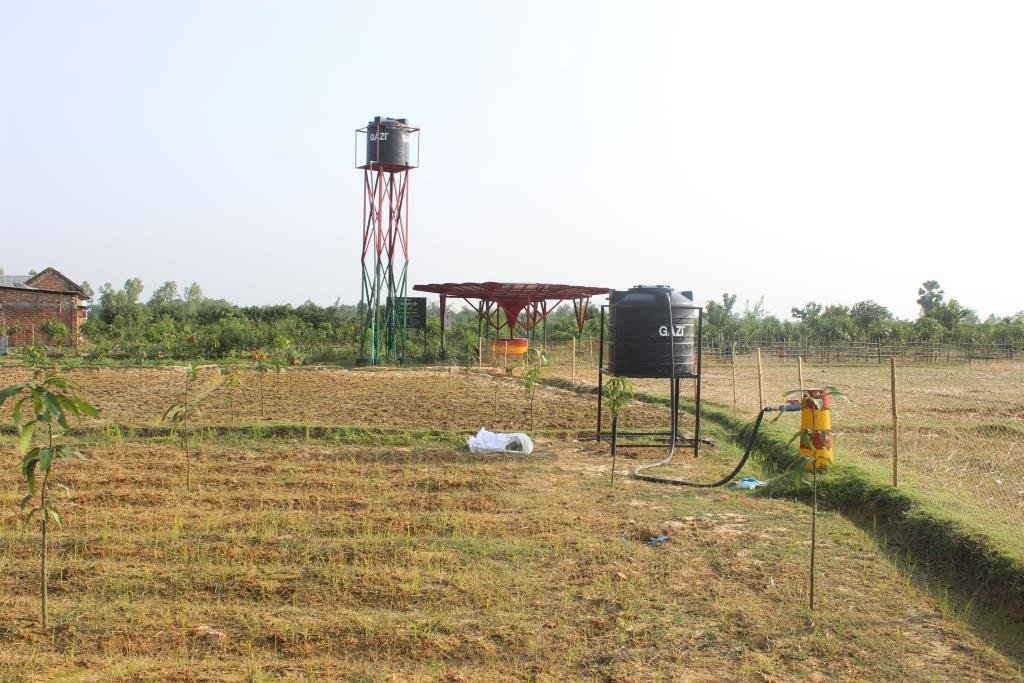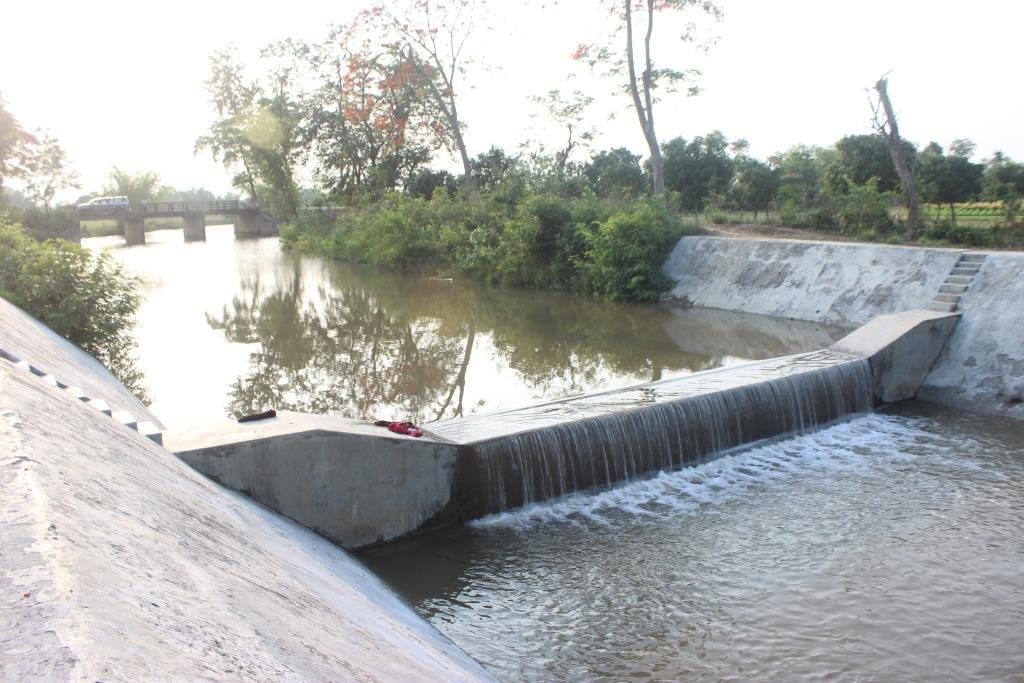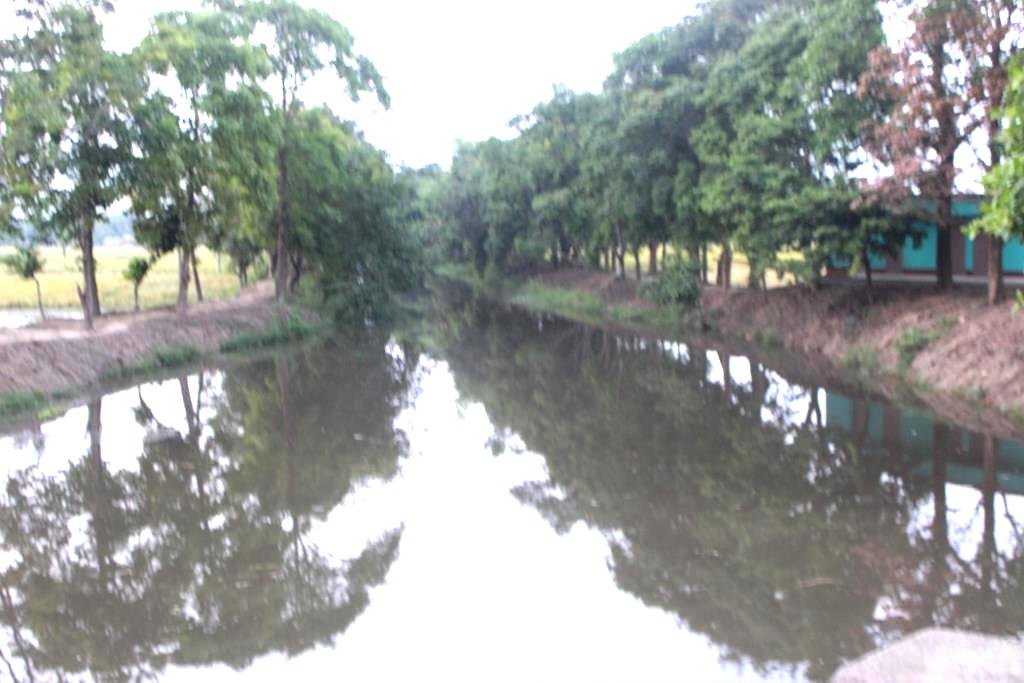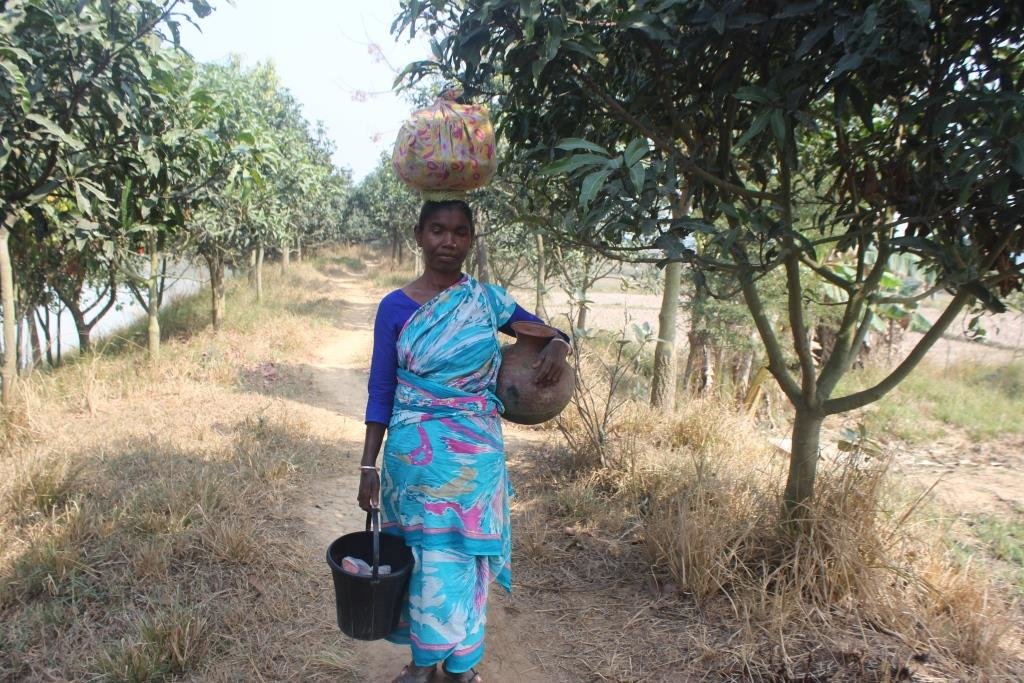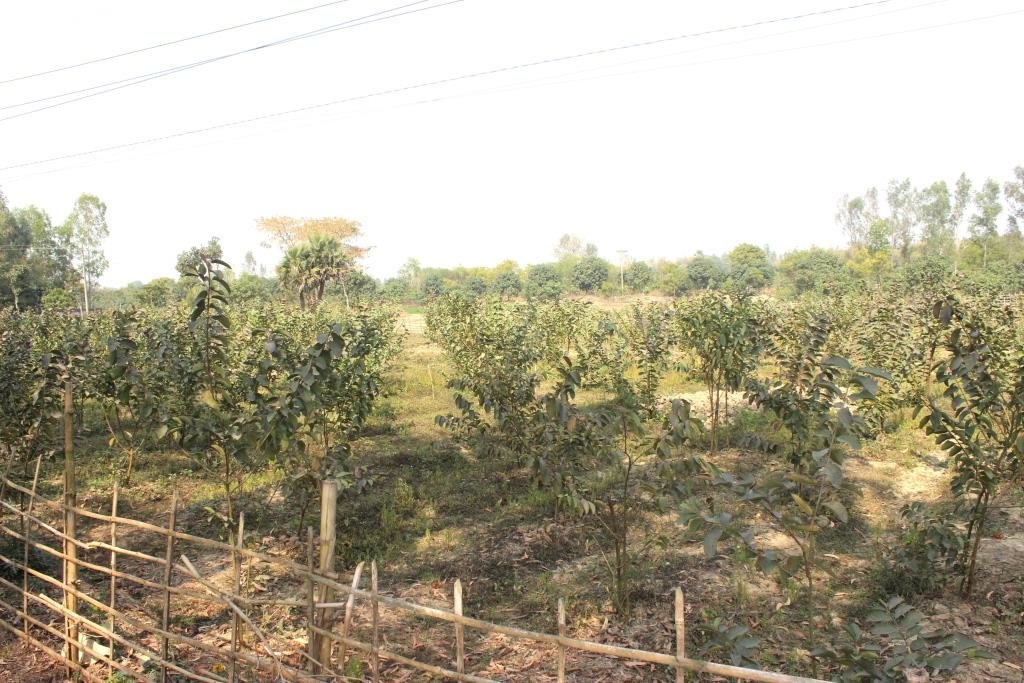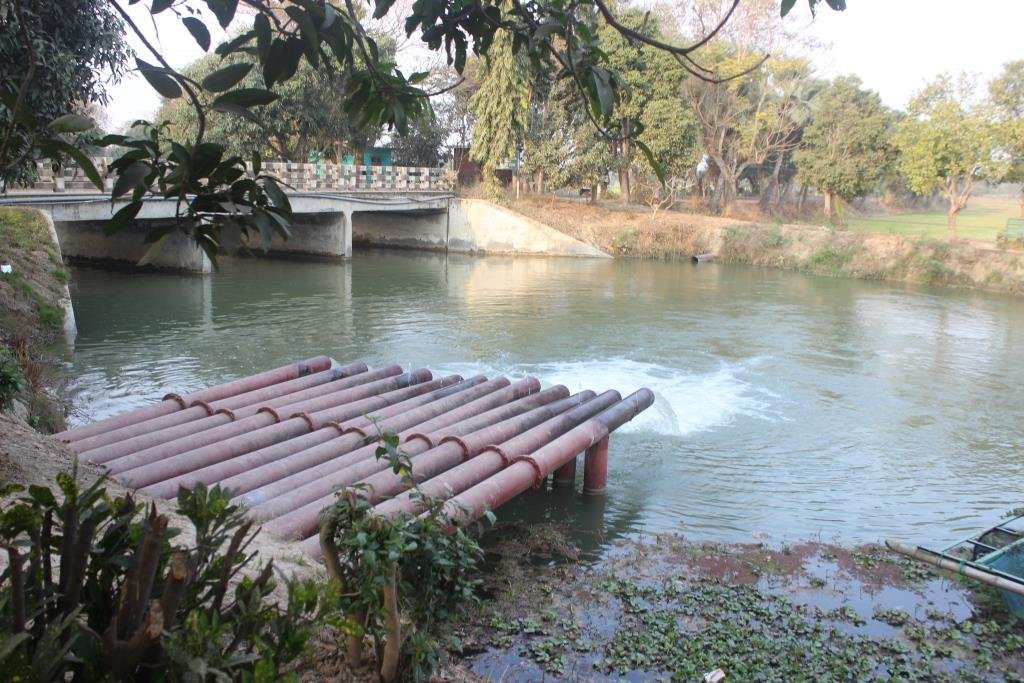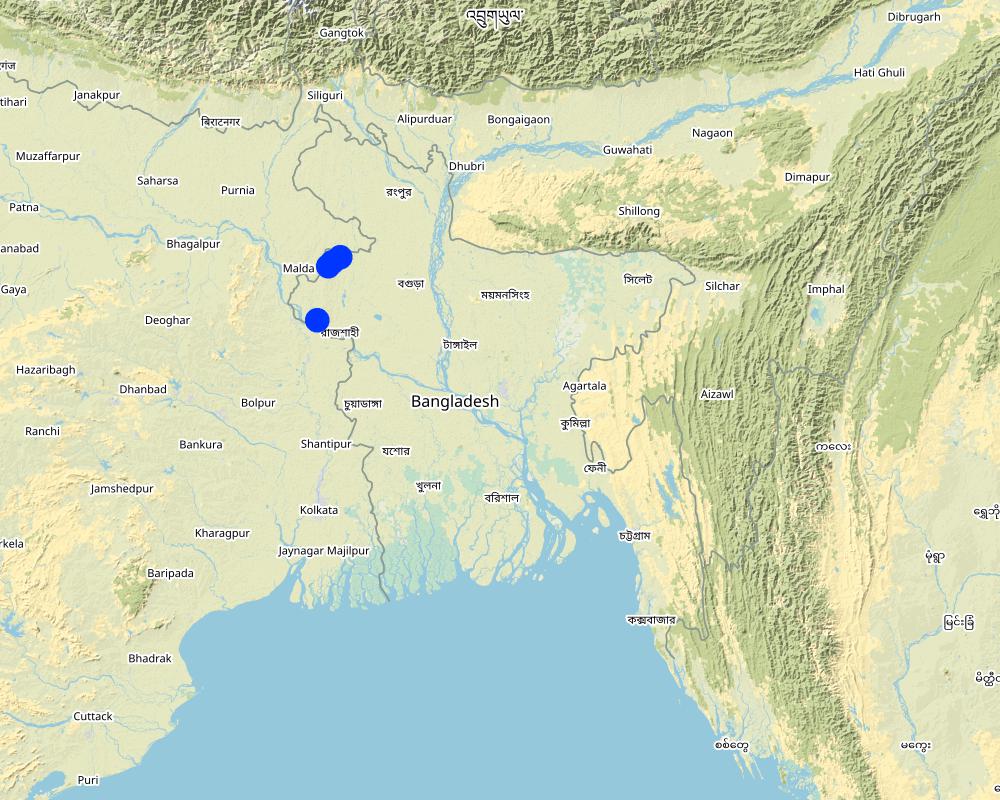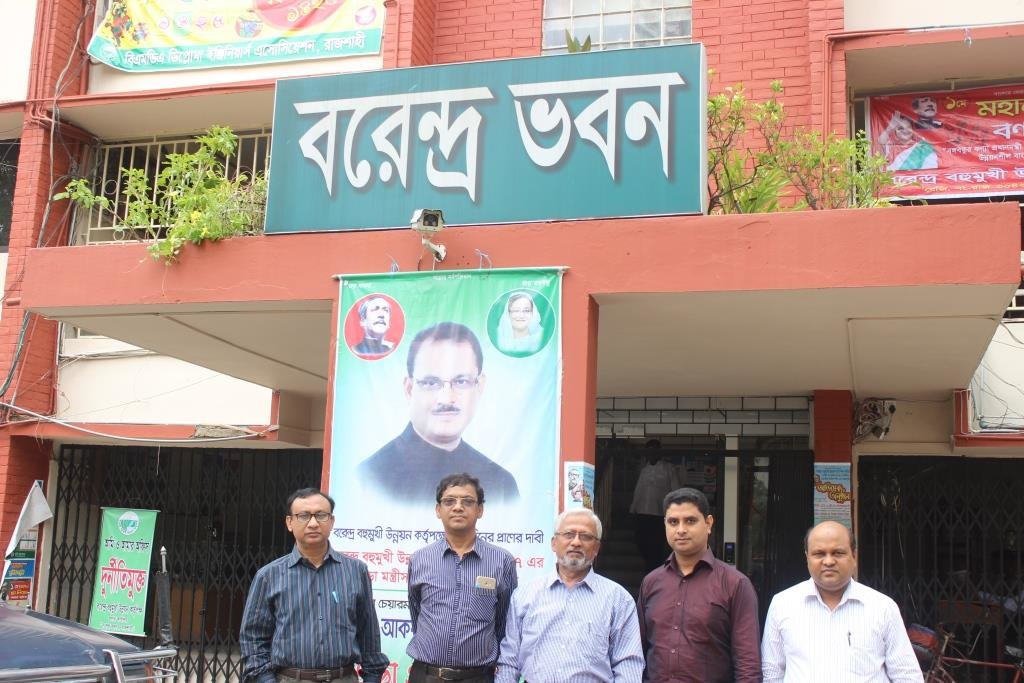Halting seasonal drought in Barind through efficient water resource management [孟加拉国]
- 创建:
- 更新:
- 编制者: Jalal Uddin Md. Shoaib
- 编辑者: –
- 审查者: Rima Mekdaschi Studer, William Critchley
Barendra elakay Khara proshaman
approaches_6143 - 孟加拉国
查看章节
全部展开 全部收起1. 一般信息
1.2 参与方法评估和文件编制的资源人员和机构的联系方式
有助于对方法进行记录/评估的项目名称(如相关)
Establishing National Land Use and Land Degradation Profile toward Mainstreaming SLM Practices in Sector Policies (ENALULDEP/SLM)有助于对方法进行记录/评估的机构名称(如相关)
Department of Environment (DoE) - 孟加拉国1.3 关于使用通过WOCAT记录的数据的条件
(现场)数据是什么时候汇编的?:
08/04/2020
编制者和关键资源人员接受有关使用通过WOCAT记录数据的条件。:
是
2. SLM方法的描述
2.1 该方法的简要说明
Introduction of sustainable water usage to prevent impacts of seasonal droughts in Barind region, Bangladesh
2.2 该方法的详细说明
该方法的详细说明:
Barind is a drought-affected area of Bangladesh. It covers about 7,770 sq. km, that is 41% of the North Western part of Bangladesh, spreading over 16 districts of Rajshahi and Rangpur Division. It is one of the driest areas in Bangladesh with comparatively high temperatures - though cooler in the wet season from mid-June to October. Rainfall in the area varies from about 1500 mm to 2000 mm per annum. Temperature ranges from 4 degree Celsius to 44 degree Celsius. The area is at a comparatively higher elevation than the adjoining floodplains. There are two main terrace levels - one at 40m and the other between 19.8 and 22.9 m above mean sea level. The total cultivable area of Barind is about 583,000 ha, of which 34% is loamy, 10% is sandy, and 49% is clay: the remaining 7% is of other composition.
In the 1980s, the area was predominantly single cropped, and yields were poor and subject to seasonal drought, from late February to early May (up to the onset of pre-monsoon). No crops could be grown during the "rabi" season (November to May). The impacts of drought were severe and affected food insecurity and livelihoods. To address the situation, the Bangladesh Agricultural Development Corporation (BADC) under the Ministry of Agriculture (MoA) initiated two projects. One in 1985: The Barind Integrated Area Development Project and subsequently in 1992, the Barind Multipurpose Development Authority (BMDA) as a separate institutional entity. Both the projects focused on a new approach to water extraction, distribution and management practices at institutional level. Deep tubewells were installed and maintained by BMDA, rather than privately (which is often practiced in other parts of the country).
Deep tubewells (DTWs) were installed to abstract water from 15-20 meters, and water was initially distributed through open channels. Later, these were fitted with smart card–operated electric/solar pumps to develop a drought-resilient irrigation system Both projects have helped the Barind region reduce poverty and achieve self-sufficiency in rice. Without supplementary irrigation, there would be crop failure.
Since it was established, BMDA has focused on halting seasonal drought in Barind, and increased cropping intensity by providing irrigation through 15,800 DTWs in different districts. That reduced the cost of irrigation water for one bigha (0.1ha) from about $40 to <$20. On the other hand initiation of smart cards and buried pipelines for water distribution increased the efficiency of water use and facilitated revenue collection by the BMDA. However abstraction of groundwater (GW) for irrigation triggered another issue - drawdown of GW in the area, which even led to abandoning shallow tubewells (STW) used for drinking water.
In 2004 BMDA initiated another project, to lift surface water from the Padma river to ponds/canals/rivers in the main land after re-excavation. These sources are used as reservoirs and at the same time contribute to GW recharge generally. At the same time, usage of solar power instead of electricity is another means of reducing the cost of pumping water.
BMDA again installed 490 dugwells where STW or DTW could not be constructed. These dug wells are used for safe drinking water and small-scale irrigation. These measures have meant that, at present, the area avoids seasonal drought in most of the locations. Potatoes, "boro" and transplanted "aman" occupy more than 50% of the cultivable land. In addition, provision of safe drinking water and improved communications have boosted the local economy. The approach embraces various technologies including (1) tapping river water (from the Ganges, Mahananda and Tangan rivers0; (2) storing water in creeks or ponds; (3) distribution to farm land through subsurface irrigation pipes (buried pipelines); (4) use of low lift pumps (LLP) with solar energy support ; (5) prepaid water metering - usage of smart cards; (6) conversion of derelict water bodies to become effective water reservoirs ; (7) dug wells with solar power for water abstraction; (8) orchard plantations where both surface or groundwater are limited; (9) plantations of trees and horticultural crops along road and channels to change the land cover; (10) usage of compost to improve soil health. All of these contribute to land degradation neutrality (LDN) in one way or another.
Finally BMDA's approach is to boost productivity in the drought affected Barind through its projects, and encouraged communities to adopt diversified land use: previously much land remained fallow during most of the year outside the monsoon. Institutions like Department of Agricultural Extension (DAE) and many NGOs promote a variety of seasonal, annual and perennial crops in the area, the use of balanced fertilizer, plantation of high density fruit crops. The impact of the BMDA approach has greatly changed the drought-affected Barind.
2.3 该方法的照片
关于照片的一般说明:
All these pictures demonstrate the usage of surface water for irrigation and livelihoods in Barind.
2.5 采用该方法的国家/地区/地点
国家:
孟加拉国
区域/州/省:
Rajshahi
注释:
Barind which was the driest area of Bangladesh, has now changed its landscape to green.
Map
×2.6 该方法的开始和终止日期
注明开始年份:
1992
注释:
Barind Multipurpose Development Authority (BMDA) is continuing with more development projects to provide irrigation facilities with more options. Cropping intensity has increased, and most of the single cropped land has been transformed to double and triple cropped land.
2.7 方法的类型
- 基于项目/方案
2.8 该方法的主要目的/目标
To provide irrigation water for cropping in dry season.
To increase cropping intensity in drought affected areas of Barind.
To manage land use or land cover in Barind.
To mobilize community on rational usage of soil and water resources.
2.9 推动或妨碍实施本办法所适用的技术的条件
社会/文化/宗教规范和价值观
- 启动
Increased livelihood options and access to education, marketing, health services.
财务资源和服务的可用性/可得性
- 启动
Increased access to financial institution.
机构设置
- 启动
All technical support provided by BMDA.
参与者的的协作/协调
- 启动
BMDA supports all action in related to irrigation, maintenance, water supply etc.
法律框架(土地使用权、土地和水使用权)
- 启动
Lands owned by land users
政策
- 启动
Land users are in the line of BMDA policies.
土地治理(决策、实施和执行)
- 启动
Traditional approach.
了解SLM,获得技术支持
- 启动
Community has access to technical support.
市场(购买投入,销售产品)和价格
- 启动
All inputs are available in the area.
工作量、人力资源可用性
- 启动
Available, people are getting work now.
3. 相关利益相关者的参与和角色
3.1 该方法涉及的利益相关者及其职责
- 当地土地使用者/当地社区
Men and women are involved in the process
Growing crops as of their choice, for example: rice, fruits, vegetables or orchard trees.
- 社区组织
Farmers have societies,
Influenced in choice of crops, etc.
- NGO
Several NGO s are functional in the area.
Most of them are supporting credit and marketing facilities
- 地方政府
Local institutions involved in the process
Capacity building, advisory services on fertilizer usage, crop selection etc.
如果涉及多个利益相关者,请注明领导机构:
BMDA is working as lead agency
3.2 当地土地使用者/当地社区参与该方法的不同阶段
| 当地土地使用者/当地社区的参与 | 指定参与人员并描述活动 | |
|---|---|---|
| 启动/动机 | 被动 | Farmers are using irrigation water for their crops supplied by BMDA and they pay revenue |
| 计划 | 被动 | Farmer nor the community are involved in the planning process |
| 实施 | 被动 | Land users allow to set buried pipelines under their fields. |
| 监测/评估 | 被动 | Land users are not involved in the M&E but they participate in the events organized. |
| 无 | Land users only choose their crops to be grown |
3.3 流程图(如可用)
具体说明:
Barind Multipurpose Development Authoroty (BMDA) is the symbol of development in Barind area also of the Tista floodplain and the Old Himalayan piedmont plain.
作者:
ShoaibJU
3.4 有关SLM技术选择的决策
具体说明谁有权决定选择要实施的技术:
- 主要是土地使用者,由SLM专家提供支持
明确做出决策的依据:
- 对充分记录的SLM知识进行评估(基于证据的决策)
- 研究结果
- 个人经验和意见(无记录)
4. 技术支持、能力建设和知识管理
4.1 能力建设/培训
是否为土地使用者/其他利益相关者提供培训?:
是
明确受训人员:
- 土地使用者
- 现场工作人员/顾问
如果相关,请说明性别、年龄、地位、种族等。:
BMDA has trained staff to care for the system by and large. There are both male and female staff.
培训形式:
- 在职
- 示范区域
涵盖的主题:
Buried pipeline maitenance, good seed production, marketing etc.
4.2 咨询服务
土地使用者有权使用咨询服务吗?:
是
指明是否提供了咨询服务:
- 在固定中心
说明/注释:
BMDA has field offices at each upazila to look after the system
4.3 机构强化(组织发展)
是否通过这种方法建立或加强了机构?:
- 是,非常
具体说明机构的强化或建立程度:
- 本地
- 区域
说明机构、角色和职责、成员等。:
BMDA has it headquarters at Rajshai city and sub-offices at all "upazila" to where the pipeline extended.
具体说明支持类型:
- 能力建设/培训
- 设备
4.4 监测和评估
监测和评估是该方法的一部分吗?:
是
注释:
BMDA monitors groundwater levels regularly, and also the pipelines and other operational activities.
若是,该文件是否用于监测和评估?:
是
注释:
During the documentation of the SLM best practices of the Barind area intensive conversations, meetings and workshops were organized with all officials of headquarter and filed offices.
4.5 研究
研究是该方法的一部分吗?
否
5. 融资和外部物质支持
5.1 该方法中SLM组成部分的年度预算
如果不知道准确的年度预算,请给出一个范围:
- 10,000-100,000
5.2 为土地使用者提供财政/物质支援
土地使用者是否获得实施该技术的财政/物质支持?:
是
如果是,请具体说明支持的类型、条件和提供者:
All infrastructural establishment cost were born by BMDA
5.3 对特定投入的补贴(包括劳动力)
- 设备
| 具体说明哪些投入得到了补贴 | 程度如何 | 对补贴做出具体说明 |
|---|---|---|
| 机械 | 充分融资 | |
| 工具 | 充分融资 | |
- 建筑
| 具体说明哪些投入得到了补贴 | 程度如何 | 对补贴做出具体说明 |
|---|---|---|
| 石料 | 充分融资 | |
- 基建
| 具体说明哪些投入得到了补贴 | 程度如何 | 对补贴做出具体说明 |
|---|---|---|
| 道路 | 充分融资 | |
5.4 信用
是否根据SLM活动的方法给予信用值?:
否
5.5 其它激励或手段
是否有其他激励措施或工具用于促进SLM技术的实施?:
是
如果是,请具体说明:
Installation and maintenance cost borne by BMDA, but farmers have to pay for water through smart cards (Pre-paid).
6. 影响分析和结论性陈述
6.1 方法的影响
该方法是否有助于当地土地使用者,提高利益相关者的参与度?:
- 否
- 是,很少
- 是,中等
- 是,支持力度很大
Farmers are using irrigation water for their crops
这种方法是否有助于基于证据的决策?:
- 否
- 是,很少
- 是,中等
- 是,支持力度很大
As of now buried pipe lines for irrigation water supply are being adopting in many areas of the country.
该方法是否帮助土地使用者实施和维护SLM技术?:
- 否
- 是,很少
- 是,中等
- 是,支持力度很大
Usage of water rationally: BMDA installs control meters for each of the land user.
该方法是否提高了SLM的协调性和成本效益?:
- 否
- 是,很少
- 是,中等
- 是,支持力度很大
The approach has changed the Barind ecosystem at large.
该方法是否提高了土地使用者实施土地管理的知识和能力?:
- 否
- 是,很少
- 是,中等
- 是,支持力度很大
Land users enable to use irrigation water for growing crops of their choice
该方法是否提高了其他利益相关者的知识和能力?:
- 否
- 是,很少
- 是,中等
- 是,支持力度很大
Other local institutions in Barind area are involved in the system.
该方法是否建立/加强了机构、利益相关者之间的合作?:
- 否
- 是,很少
- 是,中等
- 是,支持力度很大
Adoption of the irrigation system at all areas of the Barind.
该方法是否缓解了冲突?:
- 否
- 是,很少
- 是,中等
- 是,支持力度很大
Stakeholders are enable to use water as they like.
该方法是否有助于社会和经济弱势群体?:
- 否
- 是,很少
- 是,中等
- 是,支持力度很大
The area was resource poor before the 1990s. Now livelihoods of the community improved largely.
该方法是否改善了性别平等并赋予女性权力?:
- 否
- 是,很少
- 是,中等
- 是,支持力度很大
Man and women are engaged themselves in their land and crops.
该方法是否鼓励年轻人/下一代土地使用者参与SLM?:
- 否
- 是,很少
- 是,中等
- 是,支持力度很大
Interventions with new crops, specially high value fruits etc in the area.
该方法是否改善了阻碍SLM技术实施的土地使用权/用户权问题?:
- 否
- 是,很少
- 是,中等
- 是,支持力度很大
Land tenure system is traditional, where large areas are sublet or leased to the individuals or groups by the land owners.
该方法是否改善了粮食安全/改善了营养?:
- 否
- 是,很少
- 是,中等
- 是,支持力度很大
The area produces a large amount of cereals, potatoes, vegetables, fruits etc.
该方法是否改善了市场准入?:
- 否
- 是,很少
- 是,中等
- 是,支持力度很大
Fruits and paddy rice have good markets.
该方法是否改善了供水和卫生条件?:
- 否
- 是,很少
- 是,中等
- 是,支持力度很大
Safe drinking water where tubewells do not function, and sanitation also developed as the system.
该方法是否带来了更可持续的能源使用?:
- 否
- 是,很少
- 是,中等
- 是,支持力度很大
Using solar power to abstract dug well water greatly facilitates the community.
该方法是否提高了土地使用者适应气候变化/极端情况和减轻气候相关灾害的能力?:
- 否
- 是,很少
- 是,中等
- 是,支持力度很大
Vegetative cover in the Barind has changed the ecosystem at large.
该方法是否会带来就业、收入机会?:
- 否
- 是,很少
- 是,中等
- 是,支持力度很大
Local people are having work everywhere of the Barind.
6.2 土地使用者实施SLM的主要动机
- 增加生产
Cropping intensity increased
- 增加利润(能力),提高成本效益比
Low cost of irrigation water contributes to benefits for the land users.
- 减少土地退化
Halts or reduces seasonal drought
- 降低灾害风险
Less climate extremes, no crop loss due to drought. Temperature relatively cooler than before.
- 规章制度(罚款)/执行
No social unrest
- 声望、社会压力/社会凝聚
Livehood improved greatly.
- 环境意识
Local people are now aware of the environment. They grow trees around their homesteads, preserve water in their ponds etc.
6.3 方法活动的可持续性
土地使用者能否维持通过该方法实施的措施(无外部支持的情况下)?:
- 是
若是,请说明如何维持:
Buried pipeline irrigation has changed the Barind area greatly.
6.4 该方法的长处/优点
| 土地使用者眼中的长处/优势/机会 |
|---|
| More crops could be grown throughout the year, |
| Crop diversity is possible, annual, perenial or seasonal |
| Secure crop production |
| 编制者或其他关键资源人员认为的长处/优势/机会 |
|---|
| Minimum loss of irrigation water |
| Surface (river) water usage minimize stress on ground water usage |
| Improved ground water recharge |
| Safe drinking water where tubewell is not available. |
| Usage of solar power for lifting water from dug well or for lifting water to buried pipeline |
| Introduction of water meters reduces misuse of irrigation water |
6.5 该方法的弱点/缺点以及克服它们的方法
| 土地使用者认为的弱点/缺点/风险 | 如何克服它们? |
|---|---|
| The system could be implemented at single farmer level | Developing community approach with the support of the government |
| 编制者或其他关键资源人员认为的弱点/缺点/风险 | 如何克服它们? |
|---|---|
| Very high pressure on land and soil resources | Lower water consumptive crops could be introduced |
| Severe soil nutrient depletion may develop | Use of manure/ compost or organic matter or crop rotation to enrich soil |
7. 参考和链接
7.1 方法/信息来源
- 实地考察、实地调查
Intensive field visit with responsible officers (5) from BMDA and interview with beneficiaries (30) .
- 与土地使用者的访谈
Especially the farmers (5) who used to grow very high density fruits crops and of solar powered dugwell (3)
- 与SLM专业人员/专家的访谈
10 officers from different institutions, like BMDA, DAE, University of Rajshahi, SRDI, NGO, Fishries etc.
- 根据报告和其他现有文档进行编译
Few official docments of design and plan of pipelines, dugwell etc.
7.3 链接到网络上可用的相关信息
标题/说明:
Baring Multipupose Development Authority
URL:
http://www.bmda.gov.bd/site/page/2ea693ba-ac10-4ada-b304-111d72a72105/-#
标题/说明:
Pro-Poor Groundwater Development
URL:
https://openknowledge.worldbank.org/bitstream/handle/10986/33246/Pro-Poor-Groundwater-Development-The-Case-of-the-Barind-Experiment-in-Bangladesh.pdf?sequence=5
链接和模块
全部展开 全部收起链接
无链接
模块
无模块


